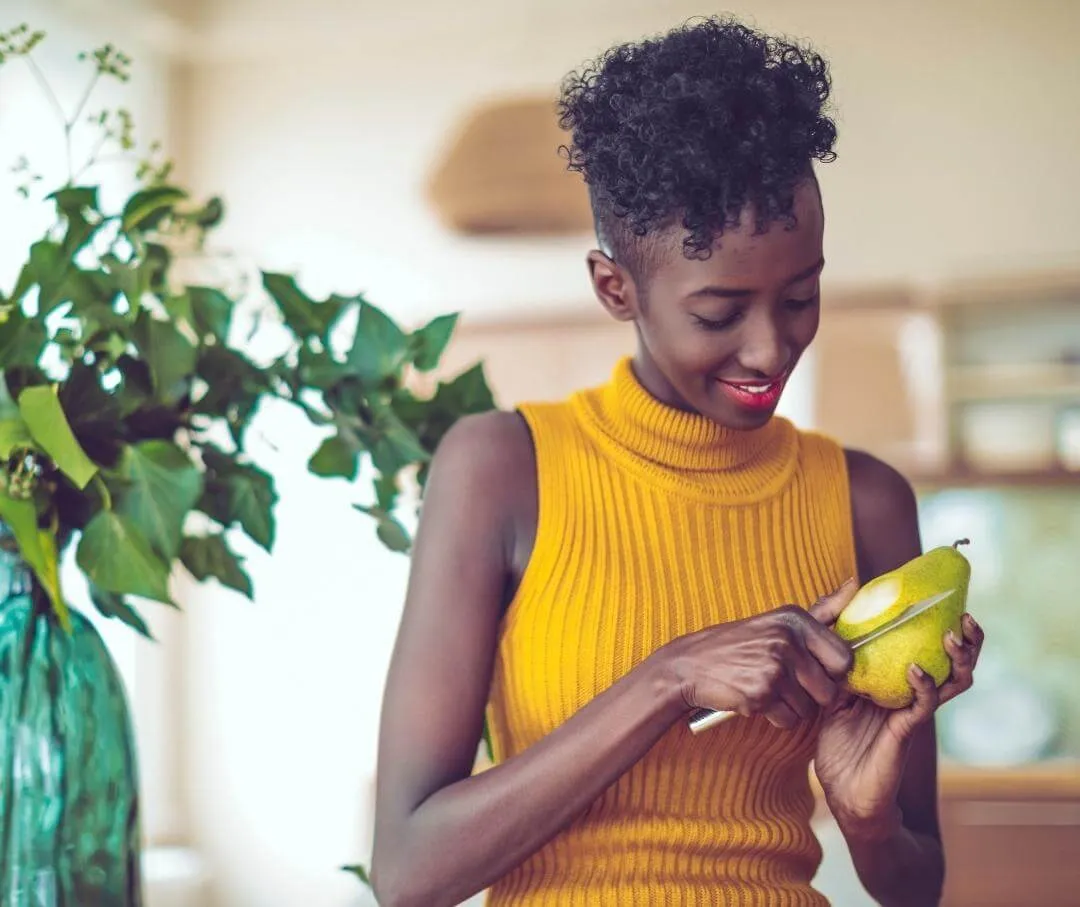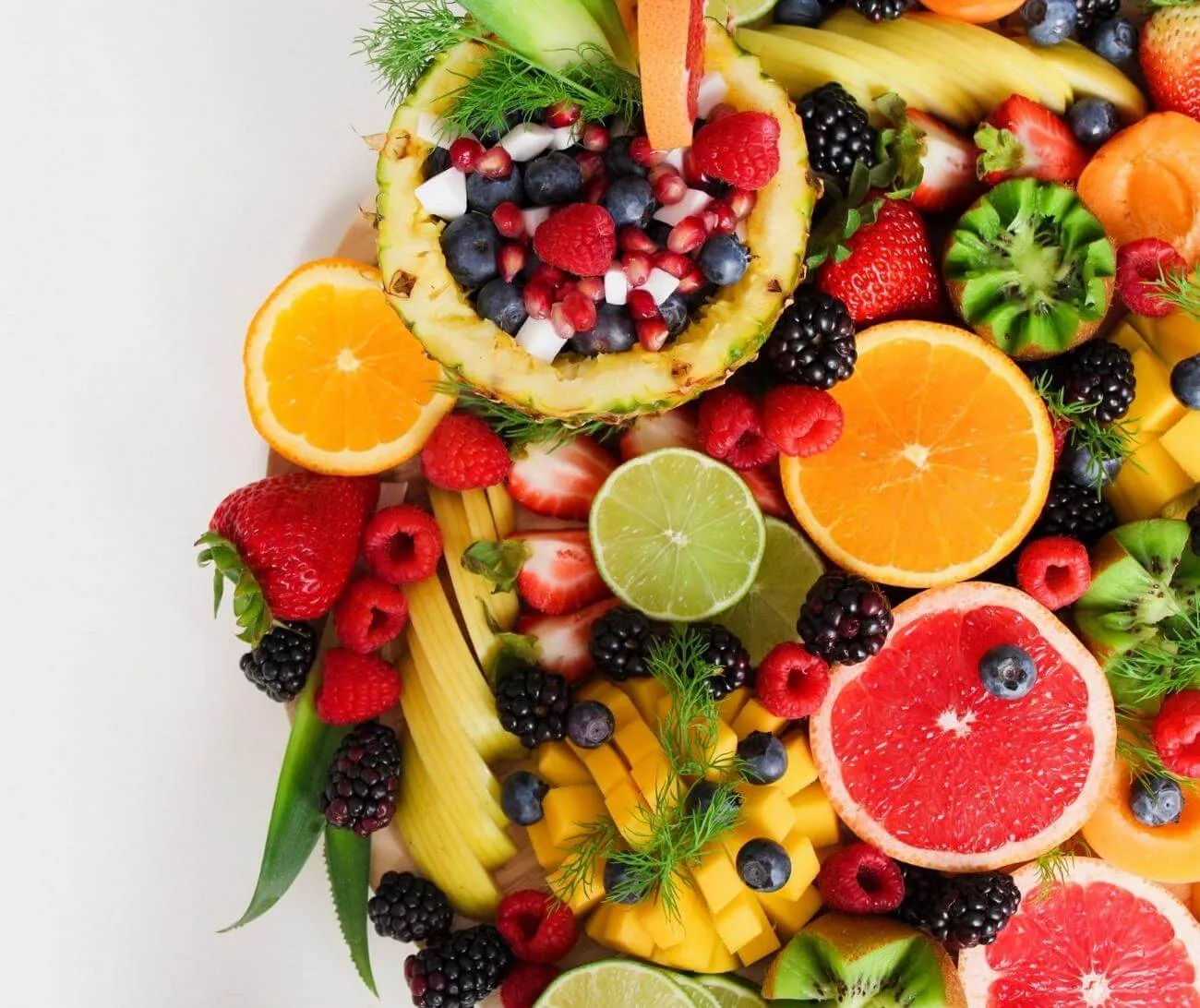Key Takeaways
- Fruits rich in fiber and natural plant compounds such as sorbitol can help relieve constipation.
- Some of the best fruits for constipation include prunes, figs, berries, pears, apples, and citrus.
- If you have persistent constipation even after making diet and lifestyle changes, consider visiting a doctor.
{{mid-cta}}
Constipation — and the uncomfortable bloat that comes with it — can throw off your whole day. A staggering 16 percent of the population deals with constipation. And while plenty of people experience it, not everyone realizes that what you eat plays a huge role in keeping things moving. 1
That means you don’t need to rely on harsh laxatives or random supplements. Some of the best remedies are sitting right in the produce aisle. Get this: Including fruits in your diet regularly can help prevent constipation, and eating certain fruits can also help relieve it when you're in the thick of things. Certain fruits are packed with dietary fiber, water, and digestion-promoting compounds and can help get your gut back on track.
Below, we've listed the best fruits for constipation and tips for maintaining good gastrointestinal health.
Understanding Constipation and Dietary Fiber
.webp)
Constipation might feel like an occasional annoyance, but it’s also a larger sign that your digestive system needs some help. Constipation happens when stool moves too slowly through the intestines, becoming hard, dry, and difficult to pass. And one of the most common culprits of constipation is not getting enough fiber.
The Dietary Guidelines for Americans recommend consuming 14 grams of fiber for every 1,000 calories you eat in a day. Yet, 95 percent of us fall short of meeting those daily fiber recommendations. (Yup, that's every single one of us.) 2 3
Dietary fiber helps sweep up all the dirt out of your digestive system. It adds bulk to stool, helps it retain water, and keeps things moving smoothly through your gut. There are two types of fiber at play here:
- Soluble fiber absorbs water, forming a gel-like consistency that softens stool.
- Insoluble fiber adds bulk and speeds up the movement of waste through your intestines.
Both types work together to keep your digestion running smoothly to prevent constipation. Without enough fiber, things slow down, leading to constipation, bloating, and discomfort.
That’s why fiber-rich fruits are such a game-changer for good gut health.
Effective Fruits for Easing Constipation
When it comes to relieving constipation naturally, some fruits stand out as digestive all-stars. The following fruits are packed with fiber, water, and gut-friendly compounds to help keep things moving smoothly.
1. Prunes
.webp)
Prunes (aka dried plums) have earned their reputation as nature’s laxative. They’re rich in soluble and insoluble fiber, helping soften stool and add bulk. They also contain sorbitol, a natural sugar alcohol that draws water into the intestines, making going number two easier. The same goes for prune juice: Research shows that people reported having fewer hard stools after three weeks of drinking a cup of prune juice a day.
A handful of prunes or a cup of prune juice a day can work wonders for your digestion, but note that dried fruit is higher in calories and sugar than fresh fruit. So if you're watching your weight or blood sugar levels, you might want to opt for a smaller portion of dried fruit or fruit juice — or go for fresh fruit instead. 4
2. Figs
.webp)
This fruit is so indulgent, it almost tastes like dessert. Even better: Figs have been shown to help support healthy bathroom habits. A randomized controlled trial looked at 150 people with irritable bowel syndrome and constipation (IBS-C) and found that eating figs contributed to less pain, bloating, and hard stools, improved bowel frequency, and significantly boosted quality of life and satisfaction. 5
3. Kiwifruit
.webp)
Kiwifruit is loaded with soluble fiber, responsible for many of the fuzzy fruit's health benefits. But kiwi also contains an enzyme called actinidin, which helps break down protein and speed up digestion. Studies have shown that eating kiwis regularly can increase bowel movements, making them a delicious and effective way to stay regular. 6 7
4. Pears
.webp)
Pears are an underrated constipation fighter. Their high fiber content is mostly found in the fruit's skin, so don't peel it off! Pears also contain sorbitol, which acts as a natural stool softener. Plus, their high water content helps keep your digestive system well-hydrated, reducing the chances of hard, difficult-to-pass stool. 8
5. Apples
.webp)
An apple a day might just keep the gastroenterologist away. Apples are packed with pectin, a type of soluble fiber that helps the stool retain water and move through the intestines more easily. Just be sure to eat the skin, where much of the fiber is found. 9
6. Berries
.webp)
Berries, including blackberries and raspberries, are some of the most fiber-rich fruits. One cup of berries can provide around 8 grams of fiber, making them an excellent choice for keeping your digestive system running smoothly. Plus, their high water content helps prevent dehydration, which can also contribute to constipation.
7. Citrus Fruits
.webp)
Citrus fruits like oranges and grapefruits aren’t just refreshing, they’re also great for digestion. They contain soluble fiber plus lots of water to help soften stool. The peels also contain naringenin, a flavonoid that has natural laxative effects. But it's worth noting that studies on naringenin have only been done on mice, so we need more human research to determine whether naringenin helps with constipation. 10
4 Tips for Incorporating These Fruits into Your Diet
Here are some simple, tasty ways to add constipation-fighting fruits to your daily routine:
1. Include them in breakfast
- Add sliced apples, pears, or berries to your morning oatmeal or yogurt. Tip: Go for plain or low-sugar Greek yogurt that contains live and active probiotics for a healthy gut microbiome.
- Blend prunes or kiwi into smoothies for a fiber-packed breakfast. Consider adding chia seeds or flaxseeds for extra fiber and healthy fatty acids.
2. Make fruit snacks easy to eat
- Keep a bowl of cut-up apples and pears in the fridge for an easy grab-and-go snack.
- Keeping washed berries in the fridge for easy handfuls is also smart, but remember that pre-washing your berries might shorten their shelf life.
- Eat a whole orange or grapefruit instead of drinking juice to get the full fiber benefits.
3. Add fruit to meals
- Toss blackberries or raspberries into salads for sweetness and tang.
- Add diced pears or apples to your favorite slaw or grain bowl. Tip: Add lentils and other legumes for extra fiber.
4. Turn fruit into dessert
- Bake pears or apples with a sprinkle of cinnamon for a naturally sweet treat.
- Make a homemade fruit salad with citrus, kiwis, and berries for a refreshing end to a meal.
- Make fruit and yogurt bark by spreading plain Greek yogurt on a baking sheet, topping it with sliced berries, kiwi, and a drizzle of honey, then freezing until firm before breaking it into pieces.
More Tips for Digestive Health
While eating fiber-rich fruits is a great start, a few other habits can help keep your digestion running smoothly.
Stay Hydrated
Fiber works best when you drink enough water. Without enough fluids, fiber can worsen constipation because fluids help move stool through the intestines. Aim to drink plenty of water throughout the day to help soften stool and support smooth digestion. If you do not like plain water, mix it up by including unsweetened herbal teas and sparkling water.
Keep Active
More movement also keeps things moving in your digestive tract. Exercise stimulates the digestive system and supports regular bowel movements. You don’t need to hit the gym every day — simple activities like getting your steps in, stretching, and yoga or pilates can make a difference.
Make Changes Gradually
Loading up on fiber all at once can lead to bloating and discomfort. Instead, you must ease into it and gradually increase your fiber intake. Give your digestive system time to adjust and remember to drink more water while adding more fiber to your diet.
When to Seek Medical Advice
.webp)
While eating more fiber-rich fruits, staying hydrated, and staying active can help, sometimes chronic constipation is a sign of something more serious. If your constipation persists or gets worse and you get severe symptoms like pain, blood in the stool, unexplained weight loss, or prolonged bloating, it’s time to check in with a doctor.
In rarer cases, chronic constipation could be linked to underlying health issues like irritable bowel syndrome (IBS), thyroid disorders, neurologic disorders, digestive blockages, and more. A healthcare professional can help identify the cause and recommend the right treatment.11
The Bottom Line
Constipation is common, but simple dietary changes — such as eating fiber-rich foods like fruit, staying hydrated, and staying active — can make a big difference. Adding prunes, figs, kiwis, pears, apples, berries, and citrus fruits to your daily routine can help naturally keep your digestion on track. But if you're still dealing with constipation after making these lifestyle and diet changes, it's worth visiting a doctor or dietitian for help.
Using a CGM with Signos: Real-Time Data, Backed by AI
Signos pairs a real-time glucose biosensor with AI trained on tens of millions of data points to deliver personalized, science-backed guidance. See exactly how your body responds, and take action.
Learn how it works. Ready to get started? Join now.
Topics discussed in this article:
References
- https://www.niddk.nih.gov/health-information/digestive-diseases/constipation/definition-facts#.
- https://www.dietaryguidelines.gov/sites/default/files/2021-03/Dietary_Guidelines_for_Americans-2020-2025.pdf
- https://pmc.ncbi.nlm.nih.gov/articles/PMC6124841/#
- https://www.health.harvard.edu/staying-healthy/prune-juice-for-constipation-a-new-study-says-yes
- https://pubmed.ncbi.nlm.nih.gov/30318190/
- https://www.sciencedirect.com/science/article/abs/pii/B9780123942944000043#
- https://pmc.ncbi.nlm.nih.gov/articles/PMC9583540/#S4
- https://pmc.ncbi.nlm.nih.gov/articles/PMC4657810/
- https://pmc.ncbi.nlm.nih.gov/articles/PMC9583540/
- https://pmc.ncbi.nlm.nih.gov/articles/PMC5752176/
- https://my.clevelandclinic.org/health/diseases/4059-constipation


.webp)

.svg)










.svg)
.svg)
.svg)
.svg)
.svg)
.svg)
.svg)
